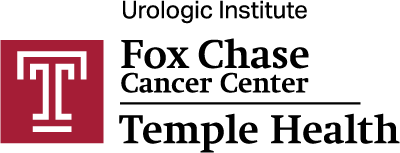The Latest in CTEPH Diagnosis and Treatment
Article Summary
- Several factors can lead to an individual developing CTEPH, including “unprovoked” pulmonary embolism (PE), presence of pulmonary hypertension, young age at the time of first PE, and recurrence of PE
- Other conditions can also increase the risk of CTEPH, including uterine fibroids and pelvic vein compression and stenosis
- 3.) Treatment for patients with CTEPH is just as complex as diagnosis, if not more. Around 64% of patients are considered operable and can be treated with pulmonary thromboendarterectomy.
Research has shown that around 3.8% of patients with pulmonary embolism go on to develop chronic thromboembolic pulmonary hypertension (CTEPH). But what are the risk factors, and how can providers best manage these patients?
Dr. Anjali Vaidya, MD, co-director of the Advanced Pulmonary Hypertension, Right Heart Failure and CTEPH/PTE Program at Temple University Hospital, provides an overview of current research and best practices in her talk, “Advances and Innovation in Chronic Thromboembolic Pulmonary Hypertension.”
Understanding Risk Factors
Vaidya explains that there are several risk factors for developing CTEPH: A seemingly “unprovoked” pulmonary embolism (PE), presence of pulmonary hypertension, young age at the time of first PE, and recurrence of PE.
“Any patient with more than one pulmonary embolism in the past, has a significantly higher risk of CTEPH than those who have had just one pulmonary embolism,” she explains.
Other risk factors include having a history of cancer, and certain medical devices with indwelling venous cords or leads, like pacemakers. Antivascular lipid patients and patients with triple-positive APS are also at very high risk, Vaidya says.
In addition, providers should be aware of mechanical factors that are increasingly recognized as increasing risk for CTEPH. These include conditions like uterine fibroids, May-Thurner syndrome, pelvic vein compression and stenosis, which can mechanically compress blood vessels in the pelvis or lower body, and increase the risk of thromboembolic disease.
A Complex Path to Diagnosis and Treatment
Providers should consider all the “puzzle pieces” in evaluating suspected CTEPH patients, including patient history and physical examination, as well as multiple imaging modalities including echocardiogram, hemodynamics, VQ scan, CT angiography, and pulmonary angiography.
It’s important to get a complete picture of the disease in order to correctly distinguish it from CTEPH mimics like pulmonary sarcoma, tumor emboli, in situ thrombosis, and more.
Treatment for these patients is just as complex as diagnosis, if not more, Vaidya says.
Around 64% of patients are considered operable and can be treated with pulmonary thromboendarterectomy (TPE); although this surgery carries significant risks and potential complications, the results can be worth it, she says.
“It can be really very satisfying to take care of these patients and see their dramatic improvements in six-minute walk, normalization of BNP, oxygenation, jugular venous pressure, and improvements in functional class,” she says.
For patients who cannot undergo PTE, balloon angioplasty and medical therapy are second-line treatments.
Vaidya stressed that these patients are complex and should be managed at a comprehensive CTEPH center, like at Temple University Hospital.
“It really does require a multidisciplinary team,” she says.


